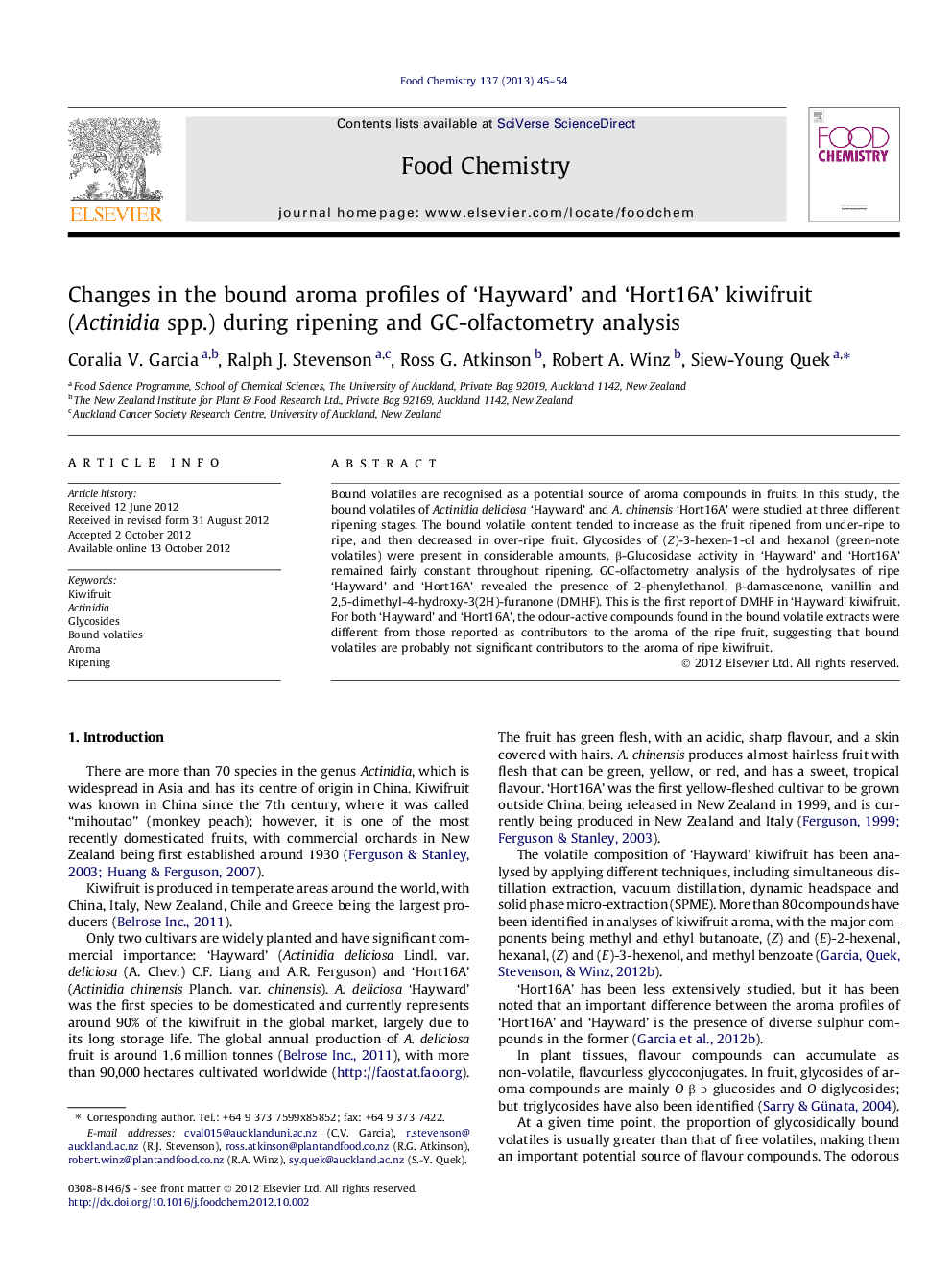| Article ID | Journal | Published Year | Pages | File Type |
|---|---|---|---|---|
| 1184274 | Food Chemistry | 2013 | 10 Pages |
Bound volatiles are recognised as a potential source of aroma compounds in fruits. In this study, the bound volatiles of Actinidia deliciosa ‘Hayward’ and A. chinensis ‘Hort16A’ were studied at three different ripening stages. The bound volatile content tended to increase as the fruit ripened from under-ripe to ripe, and then decreased in over-ripe fruit. Glycosides of (Z)-3-hexen-1-ol and hexanol (green-note volatiles) were present in considerable amounts. β-Glucosidase activity in ‘Hayward’ and ‘Hort16A’ remained fairly constant throughout ripening. GC-olfactometry analysis of the hydrolysates of ripe ‘Hayward’ and ‘Hort16A’ revealed the presence of 2-phenylethanol, β-damascenone, vanillin and 2,5-dimethyl-4-hydroxy-3(2H)-furanone (DMHF). This is the first report of DMHF in ‘Hayward’ kiwifruit. For both ‘Hayward’ and ‘Hort16A’, the odour-active compounds found in the bound volatile extracts were different from those reported as contributors to the aroma of the ripe fruit, suggesting that bound volatiles are probably not significant contributors to the aroma of ripe kiwifruit.
► Bound volatiles of green and gold kiwifruit were determined at 3 ripening stages. ► Ripe fruit had the highest bound volatile content. ► Most compounds were common to both kiwifruit cultivars. ► GC-O analysis revealed the presence of several odour-active compounds. ► The presence of DMHF in green kiwifruit is reported for the first time.
